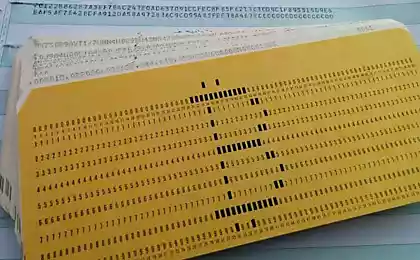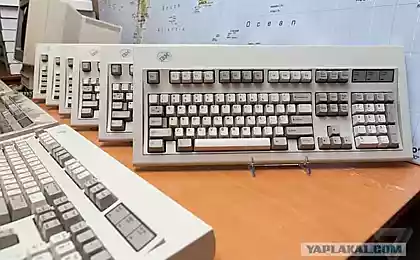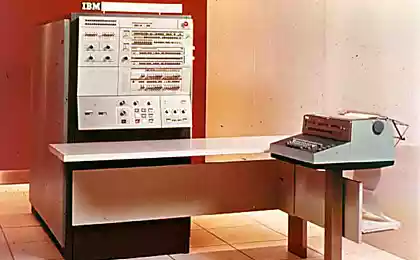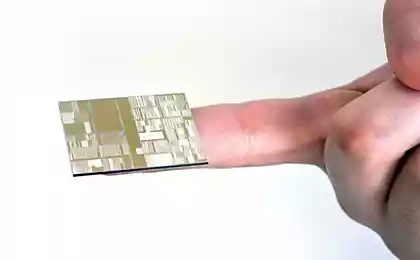445
Computer brain approaching the human
IBM gathered the chip, simulating 1 million neurons and 256 million interneuronal connections.
Most modern computers are based on von Neumann architecture. Still 1945, John von Neumann came up with the scheme of the process of the sequential processing, which includes an arithmetic logic unit, data-processing, control unit, memory and input devices-output. Arithmetic logic unit performs some operation with the data and proceeds to the next operation, and the faster it will spin the cycle, the more productive will be the computer. The frequency of the transition from team to team determines the clock generator issuing electrical pulses varying at a given frequency.
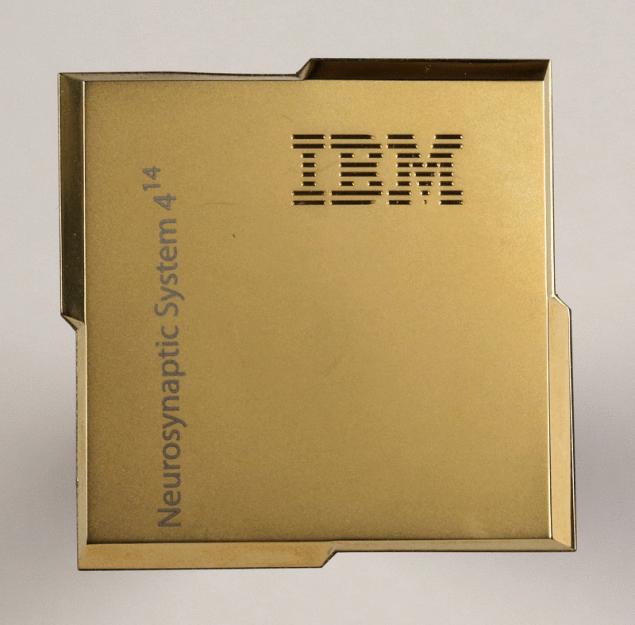
From the architecture of von Neumann has one known disadvantage, which is that both data and program instructions describing what you need to do with the data located in the same memory. The processor collects data either from memory or manipulates them in accordance with the command. Simultaneously load new data and process them in the framework of such a scheme is impossible. Because of this, modern computers, however fast they may be, it is difficult to perform certain tasks, such as recognizing images.
Trying to go beyond the architecture of von Neumann, the specialists of "electronic brains" applied to the brain in the present. As you know, the nervous system works due to the tremendous number of nerve cells forming contacts with each other with synapses. The same neuron forms connections with many other neurons to take into account when transmitting signals "opinion" of neighbors, involved in several neural circuits, it breaks the old synapses, generates new, etc. etc. Several billion nerve cells seem to constantly "breathe" forming, strengthening, weakening and breaking lots of connections-synapses. Processing the image, the brain works in parallel, that is, different neurons do different parts of the picture, instead of sequentially, pixel by pixel, to comb, as does the CPU. The same applies to other tasks, not just visual.
One of the successful attempts of the embodiment of the brain in iron made in a research laboratory of IBM in the project SyNAPSE (Systems of Neuromorphic Adaptive Plastic Scalable Electronics). Its essence is to create cores with a clean slate, which could simulate the brain. Each of them contains a "synapse" (memory), "the body of the neuron" (computing unit) and "axon" (the communication channel). Working in parallel, a large array of such nuclei will provide new features like instant recognition of complex images, the detection of relations between objects, predict future events, etc.
If to describe a problem very rudely and with lots of approximations and assumptions, its essence is to create sverhtehnologichny processor, where each core will operate as a neuron. In an article in Science Modha Dharmendra (Dharmendra S. Mac Southwood) and his colleagues describe a chip North, consisting of 4,000 cores, each of which has 256 input channels and 256 output channels information. Moreover, the electrical signal leaves the core only if it exceeds some threshold – just as it occurs in living neurons. In General, the manufacturer of the chip left 5.4 billion transistors, which together simulate 1 million neurons and 256 million of intercellular connections. Connection cores inside the chip, according to the authors, mimic the neural circuits of the brain. A computer with this chip, for example, quickly and correctly distinguishes at the photos just one person from a Bicycle and a car from other vehicles. "Mosgordumy" chip was not only more efficient than standard processors, but less heated during operation.
In the future, engineers are going to continue to stuff your CPU transistors to make it even more similar to the brain – recall that at this stage he mimics 1 million neurons, whereas in the brain their 86 trillion. By the way, there have been attempts to simulate the brain using conventional integrated circuit technology, and the most ambitious of these attempts, reproduced 1.6 billion neurons and of 8.87 trillion synapses, which corresponds to the cortex of the cat. It took the supercomputer Blue Gene/P Dawn, with 147 456 CPUs and 144 TB of main memory. In other words, while even the most powerful computer complexes in the world is not able to reproduce the potential that we have laid in the nature. But perhaps with the advent of "neural processors" the situation will begin to change.
According to LiveScience.
Source: nkj.ru
Most modern computers are based on von Neumann architecture. Still 1945, John von Neumann came up with the scheme of the process of the sequential processing, which includes an arithmetic logic unit, data-processing, control unit, memory and input devices-output. Arithmetic logic unit performs some operation with the data and proceeds to the next operation, and the faster it will spin the cycle, the more productive will be the computer. The frequency of the transition from team to team determines the clock generator issuing electrical pulses varying at a given frequency.

From the architecture of von Neumann has one known disadvantage, which is that both data and program instructions describing what you need to do with the data located in the same memory. The processor collects data either from memory or manipulates them in accordance with the command. Simultaneously load new data and process them in the framework of such a scheme is impossible. Because of this, modern computers, however fast they may be, it is difficult to perform certain tasks, such as recognizing images.
Trying to go beyond the architecture of von Neumann, the specialists of "electronic brains" applied to the brain in the present. As you know, the nervous system works due to the tremendous number of nerve cells forming contacts with each other with synapses. The same neuron forms connections with many other neurons to take into account when transmitting signals "opinion" of neighbors, involved in several neural circuits, it breaks the old synapses, generates new, etc. etc. Several billion nerve cells seem to constantly "breathe" forming, strengthening, weakening and breaking lots of connections-synapses. Processing the image, the brain works in parallel, that is, different neurons do different parts of the picture, instead of sequentially, pixel by pixel, to comb, as does the CPU. The same applies to other tasks, not just visual.
One of the successful attempts of the embodiment of the brain in iron made in a research laboratory of IBM in the project SyNAPSE (Systems of Neuromorphic Adaptive Plastic Scalable Electronics). Its essence is to create cores with a clean slate, which could simulate the brain. Each of them contains a "synapse" (memory), "the body of the neuron" (computing unit) and "axon" (the communication channel). Working in parallel, a large array of such nuclei will provide new features like instant recognition of complex images, the detection of relations between objects, predict future events, etc.
If to describe a problem very rudely and with lots of approximations and assumptions, its essence is to create sverhtehnologichny processor, where each core will operate as a neuron. In an article in Science Modha Dharmendra (Dharmendra S. Mac Southwood) and his colleagues describe a chip North, consisting of 4,000 cores, each of which has 256 input channels and 256 output channels information. Moreover, the electrical signal leaves the core only if it exceeds some threshold – just as it occurs in living neurons. In General, the manufacturer of the chip left 5.4 billion transistors, which together simulate 1 million neurons and 256 million of intercellular connections. Connection cores inside the chip, according to the authors, mimic the neural circuits of the brain. A computer with this chip, for example, quickly and correctly distinguishes at the photos just one person from a Bicycle and a car from other vehicles. "Mosgordumy" chip was not only more efficient than standard processors, but less heated during operation.
In the future, engineers are going to continue to stuff your CPU transistors to make it even more similar to the brain – recall that at this stage he mimics 1 million neurons, whereas in the brain their 86 trillion. By the way, there have been attempts to simulate the brain using conventional integrated circuit technology, and the most ambitious of these attempts, reproduced 1.6 billion neurons and of 8.87 trillion synapses, which corresponds to the cortex of the cat. It took the supercomputer Blue Gene/P Dawn, with 147 456 CPUs and 144 TB of main memory. In other words, while even the most powerful computer complexes in the world is not able to reproduce the potential that we have laid in the nature. But perhaps with the advent of "neural processors" the situation will begin to change.
According to LiveScience.
Source: nkj.ru
